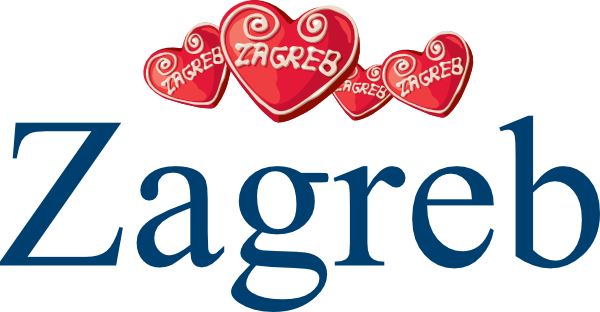Julije Knifer is a widely acclaimed artist in, including sketches, drawings, graphic art, most famous for his devoted use and treatment of the meander motif, today an iconic geometric symbol. Knifer worked with the geometric shape of the meander and its discernible pattern repeatedly during the course of his nearly five-decade long career as an artist, but almost never in the exact same variation. Knifer would always find new ways of constructing, dynamising, and varying the meander, most often in black and white, and only sometimes in colour. He repeated and applied the meander in every medium that he created collages, paintings, three-dimensional works of sculpture or performance art, murals, and works of art in public spaces, be it a street, a library or a subway station.
Julije Knifer was born on 23rd April 1924 in the east of Croatia; in Osijek, to be exact. Following the end of World War II, he moved to Zagreb together with his family. In Zagreb, Knifer first enrolled at the Faculty of Law, but dropped out, and in the 1950s he enrolled at the Academy of Fine Arts, the only art academy in Croatia at the time, which he graduated from in 1956. It was already during his studies that he started travelling around Europe, and visiting museums and exhibitions of contemporary art. The first time that he visited Paris, the city in which he would spend the last decade of his life, was in 1957. He exhibited his meanders for the first time at the New Tendencies exhibition mounted in Zagreb’s famous Contemporary Art Gallery in 1961. In the same year, he joined the today widely acclaimed, iconic Gorgona art collective. The collective got together in 1959 and was active until 1965, and included painters Josip Vaništa, Marijan Jevšovar and Đuro Seder, sculptor Ivan Kožarić, architect Miljenko Horvat, and art historians Dimitrije Bašičević Mangelos, Matko Meštrović and Radoslav Putar. This avantgarde collective explored areas of contemporary art that hadn’t yet been explored, and left their mark on Croatia’s contemporary art scene by having influenced it in a way which is felt to this day. Julije Knifer’s international career also began in 1961, when he exhibited his work at the International Constructive Abstract Art (Art Abstrait Constructif International) exhibition held in the famous Parisian Galerie Denise René, after which he never left the international art scene. In 1962 he exhibited at the Constructivists (Konstruktivisten) exhibitions held in the Städtisches Museum in Leverkusen, and in 1963 at the 6th San Marino International Art Biennale, Beyond The Informal. He exhibited at the Venice Biennale twice, in 1976 and 2001, and at the São Paulo Art Biennial thrice, in 1973, 1979 and 1981.
Celebrations of the centenary of Julije Knifer’s birth start in Croatia with Papers, an exhibition mounted in the Museum of Fine Arts in his hometown, Osijek. Although the Papers exhibition presents only the works he created using only one medium and one material, the one that makes up a significant portion of his entire oeuvre, it nevertheless represents a broad spectrum of his studies and a very wide range of applications of various working techniques and processes, ranging from his first sketches to his pencil drawings in which graphite is applied in thick layers, a technique that, it can be claimed, Knifer invented.
Along with sketches, collages, drawings, and pastels, the exhibition also presents his diaries, which he wrote regularly since the end of the 1950s, and which continue to be researched by art historians. Concurrently, the State Archives in Osijek will be presenting a selection of photographs from the Knifer family’s photo album and memorabilia from the life of the Knifer family in Slavonia.
With the support of and in partnership with Croatia’s Ministry of Culture and Media, the Zagreb Tourist Board, and the Museum of Contemporary Art, the Institute for Contemporary Art in Zagreb organised an international conference on Julije Knifer this spring. At lectures and round tables, art historians, Knifer’s friends, experts from Croatia, France, Germany, and the USA discussed various aspects of Knifer’s work, as well as the practices of presenting contemporary art in the world, the tourist potential of contemporary art, the position of artists on the market, and the art market itself. Having represented Knifer for a long time, the Frank Elbaz Gallery in Paris is setting up a solo exhibition of his work in November 2024. Similarly, the Peter Freeman Gallery, Inc. in New York will be introducing American viewers to Julije Knifer for the first time by mounting a solo exhibition of his work in September of this year.
Zagreb’s Museum of Contemporary Art, which organised in 2014 a large retrospective exhibition of Julije Knifer called No Compromise, is also amongst those joining the project. In addition to hosting the above conference, it is setting up an exhibition with its associates and collaborators of Julije Knifer’s works from the museum’s holdings, works that haven’t been on view in galleries and museums often enough. A book published by the publishing house Osmos from New York was the last major project that contributed to our understanding of Knifer’s oeuvre and artistic process. In this book, Prof. Zvonko Maković and the German-New York curator Christian Rattemeyer analyse Knifer’s collages that hadn’t been sufficiently explored. The book was presented in Zagreb in the autumn of 2022. Although we are now celebrating the 100th anniversary of his birth, and in 2004 we celebrated the 20th anniversary of his death, there is still a lot of work to be done by both experts and the public. However, there’s also a lot of pleasure to be found in solving the mysteries of Julije Knifer’s art.
Author: Janka Vukmir
Photo credit: Branko Balić
